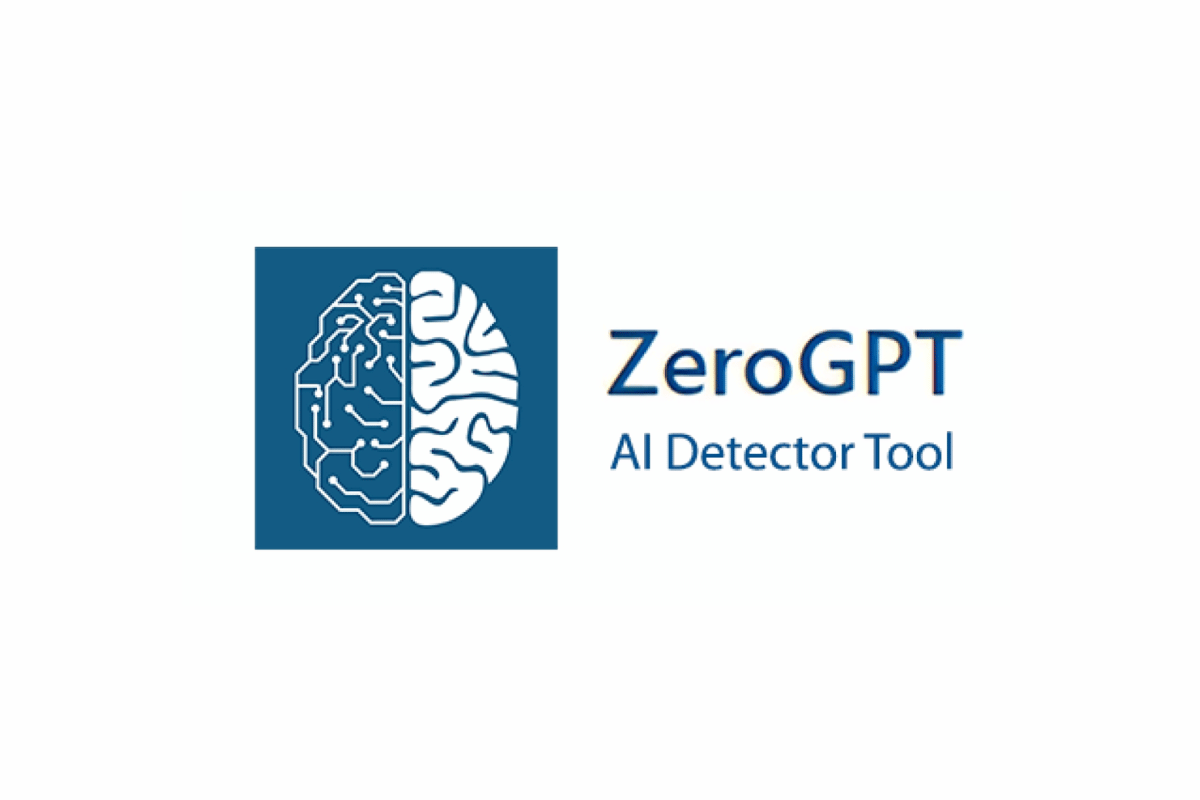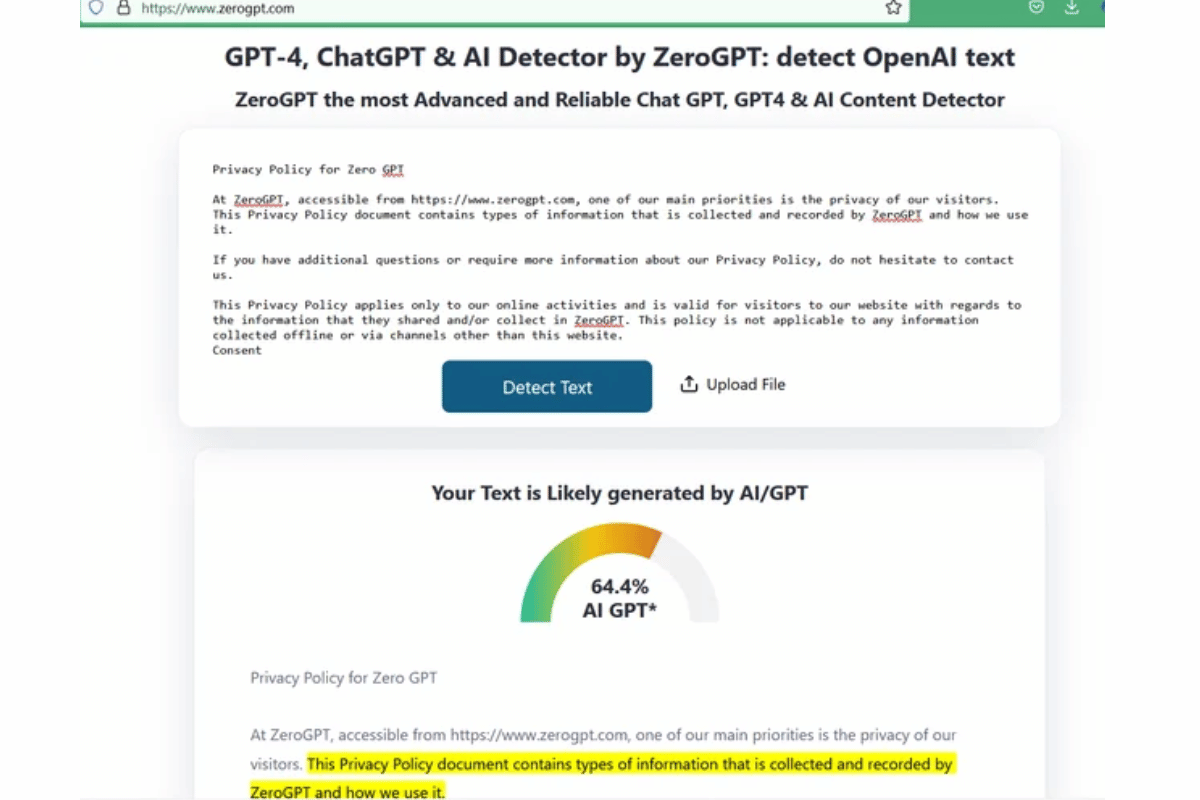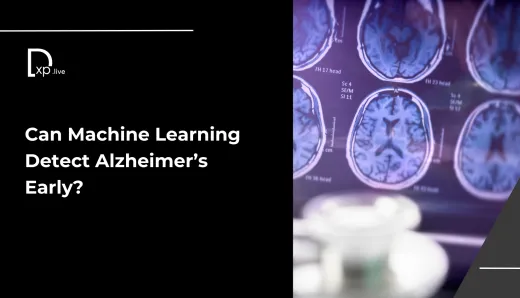ZeroGPT: The Key to Detecting AI-Generated Content and Ensuring Authenticity

As artificial intelligence permeates various industries, distinguishing between human-generated and AI-generated content has become increasingly critical. One of the most advanced tools addressing this challenge is ZeroGPT, a cutting-edge AI detection system capable of identifying content produced by OpenAI’s ChatGPT and similar AI systems. This editorial explores the significance of ZeroGPT, how it works, and why it is fast becoming a game-changer for businesses and industries striving to maintain content authenticity in a digital world.

The Rise of AI-Generated Content
Artificial intelligence, particularly AI text generators like ChatGPT, has revolutionized content creation, offering incredible efficiency and scalability. From writing marketing copy to generating academic papers, AI has proven its ability to produce human-like text at remarkable speeds. However, with these advances come challenges, especially concerning content authenticity. As AI-generated content becomes more indistinguishable from human-created text, the need for tools that can detect such content has surged.
Understanding ChatGPT Zero and ZeroGPT
ChatGPT Zero refers to the identification of AI-generated content, specifically content produced by OpenAI's ChatGPT, using a tool known as ZeroGPT. The name "Zero" symbolizes detection, acting as a flag for uncovering AI-generated text amidst human-written content. As the lines between human and AI text continue to blur, the ability to detect AI involvement is more important than ever.
ZeroGPT is at the forefront of this detection technology, providing users with a highly accurate system capable of analyzing content and identifying patterns that indicate AI creation. With AI text generators like ChatGPT becoming widely available, the risk of content misuse, such as plagiarism or the spread of misinformation, has grown exponentially. ZeroGPT's core functionality lies in addressing these risks, making it an indispensable tool for businesses, educational institutions, and content creators.
How ZeroGPT Detects AI-Generated Content
ZeroGPT uses a multi-step process to analyze and detect AI-generated content:
- Text Analysis: The first step involves analyzing the structure, syntax, and patterns within the text. AI-generated content often follows certain stylistic trends, such as repetitive sentence structures or specific phrasing. ZeroGPT scans for these patterns to determine if the content was produced by an AI system.
- Comparison with Known Models: ZeroGPT compares the submitted content against a database of known AI-generated outputs. By matching the text with pre-existing AI content, it can estimate the likelihood of AI involvement.
- Probability Scoring: Once the analysis is complete, ZeroGPT assigns a probability score, indicating how likely it is that the content was generated by AI. This score allows users to make informed decisions about the authenticity of the text.
- Contextual Insights: ZeroGPT goes beyond simple detection, offering contextual insights by highlighting specific parts of the text that triggered its analysis. This transparency helps users understand why a particular piece of content is flagged as AI-generated.
Why ZeroGPT is a Game-Changer for Businesses
In a world where AI-generated content is becoming more prevalent, ZeroGPT plays a critical role in ensuring authenticity and trust. Businesses, educational institutions, and digital platforms all stand to benefit from this powerful detection tool.
1. Ensuring Content Authenticity
For businesses, maintaining content authenticity is crucial for brand trust and credibility. Whether it's marketing materials, customer communications, or internal reports, the ability to differentiate between AI-generated and human-written content ensures that companies are presenting genuine information. In industries like journalism and media, ZeroGPT is essential in combating the rise of AI-generated misinformation, helping maintain the integrity of published content.
2. Preventing Misuse and Protecting Integrity
AI-generated content, while beneficial in many cases, can also be exploited for malicious purposes. From creating fake news to generating misleading press releases, the potential for misuse is high. ZeroGPT helps businesses and organizations detect these attempts, preventing the spread of false information and protecting their reputations.
3. Upholding Academic Standards
In the education sector, the rise of AI-generated essays and academic papers poses a significant threat to academic integrity. ZeroGPT provides educators with a tool to detect AI involvement in student submissions, ensuring that academic standards are upheld. By identifying content that has been partially or entirely created by AI, teachers can ensure that students are producing original work.
4. Enhancing Content Moderation for Platforms
Digital platforms that host user-generated content, such as social media networks and forums, face increasing challenges with AI-generated posts and comments. ZeroGPT's ability to identify AI-generated content helps these platforms improve content moderation, ensuring that user interactions remain authentic and free from bot-generated spam or fake accounts.
ZeroGPT and Digital Experience
ZeroGPT's impact on the digital experience is profound. As AI continues to reshape how content is created and shared, tools like ZeroGPT ensure that users can trust the information they encounter online. By flagging AI-generated content, ZeroGPT not only enhances transparency but also protects the user from misleading or fraudulent material. This directly contributes to a more secure and trustworthy digital environment, where businesses, consumers, and platforms can confidently interact without fear of deception.
Additionally, ZeroGPT enhances the user experience by offering a user-friendly interface and seamless integration with various workflows. Its accessibility, as a free and open-source tool, ensures that businesses and individuals alike can utilize its capabilities, regardless of their technical expertise. The tool's efficiency and accuracy in detecting AI content allow users to focus on creating high-quality, genuine material without worrying about the authenticity of their output.
The Broader Implications of AI Content Detection
As AI technologies continue to evolve, the role of tools like ZeroGPT will only become more significant. The ability to distinguish between human and AI-generated content is not just a matter of academic integrity or business ethics—it’s about ensuring trust in digital communication. Whether it’s protecting brands from AI-generated fake news, ensuring that students submit original work, or preventing malicious actors from using AI for deception, ZeroGPT is at the center of these efforts.
With ZeroGPT's advanced detection capabilities, organizations can confidently navigate the evolving digital landscape, knowing they have a reliable method for verifying the authenticity of content. As AI becomes more sophisticated, ZeroGPT will remain a vital tool in maintaining the integrity of written material, safeguarding against the misuse of AI, and ensuring that businesses and consumers can trust the content they encounter.
In a nutshell
In an age where AI-generated content is becoming the norm, ZeroGPT offers a powerful solution for detecting and identifying such content. From businesses seeking to maintain their brand integrity to educators ensuring academic honesty, ZeroGPT plays a vital role in upholding standards and preventing misuse. As AI continues to transform content creation, the importance of tools like ZeroGPT cannot be overstated. For businesses, platforms, and institutions looking to ensure content authenticity, ZeroGPT is not just a tool—it’s a game-changer.
Stay informed about the latest advancements in AI by subscribing to digitalexperience.live. Get expert insights, updates, and the tools you need to navigate the evolving digital landscape. Join us today and stay ahead in the AI-driven future!




